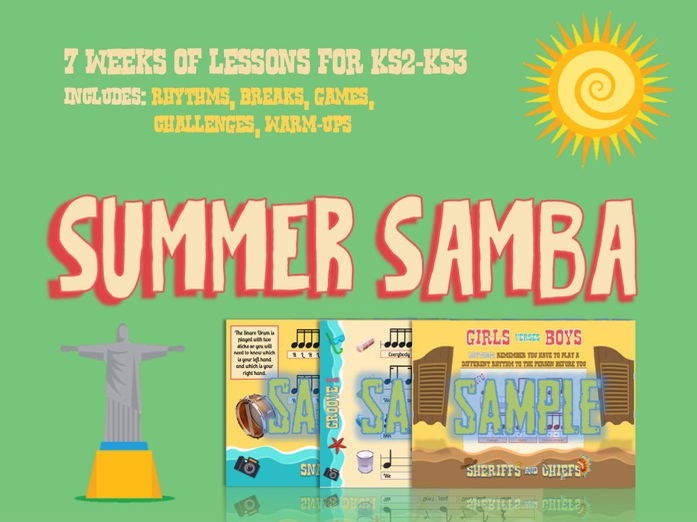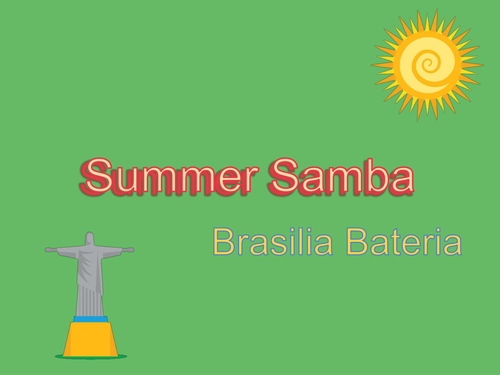







CONTENT:
7 weeks of lessons for a medium ability KS2 class, though it could even be used as entry level for KS3. Powerpoints include a handful of games, warm ups, rhythms, breaks, hand signs, etc. I usually deliver these lessons in around 30-40minutes but I still try to spend time improving timing and playing to a pulse even by the end of the year. I use both the Apito whistle and the animations available in Powerpoint to have 4 Apito whistles appear on the screen to add a visual element (a wireless presenter is handy).
MAKE SURE YOU INSTAL THE FONTS
NOTES:
The rests on the Surdo part are meant to be played with a bare hand. Ganza shakers are usually encouraged to make a < shape going up, back to the chest, down, back up to the chest (repeat). For the Tamborims I tend to get them to try an 'on/off' pattern similar to the Agogos adding + for closed on beat 1 + 3 and o for open on beats 2+4. I normally tell Agogo players to put their hand out as if they are shaking someone's hand but in this case the handle of the Agogo. From there I get them to make sure they are keeping close to the instrument and playing using their wrist. I said this goes for all other instruments too.
For more, see my KS2-KS3 Samba book.
7 weeks of lessons for a medium ability KS2 class, though it could even be used as entry level for KS3. Powerpoints include a handful of games, warm ups, rhythms, breaks, hand signs, etc. I usually deliver these lessons in around 30-40minutes but I still try to spend time improving timing and playing to a pulse even by the end of the year. I use both the Apito whistle and the animations available in Powerpoint to have 4 Apito whistles appear on the screen to add a visual element (a wireless presenter is handy).
MAKE SURE YOU INSTAL THE FONTS
NOTES:
The rests on the Surdo part are meant to be played with a bare hand. Ganza shakers are usually encouraged to make a < shape going up, back to the chest, down, back up to the chest (repeat). For the Tamborims I tend to get them to try an 'on/off' pattern similar to the Agogos adding + for closed on beat 1 + 3 and o for open on beats 2+4. I normally tell Agogo players to put their hand out as if they are shaking someone's hand but in this case the handle of the Agogo. From there I get them to make sure they are keeping close to the instrument and playing using their wrist. I said this goes for all other instruments too.
For more, see my KS2-KS3 Samba book.
Something went wrong, please try again later.
Report this resourceto let us know if it violates our terms and conditions.
Our customer service team will review your report and will be in touch.
£2.25